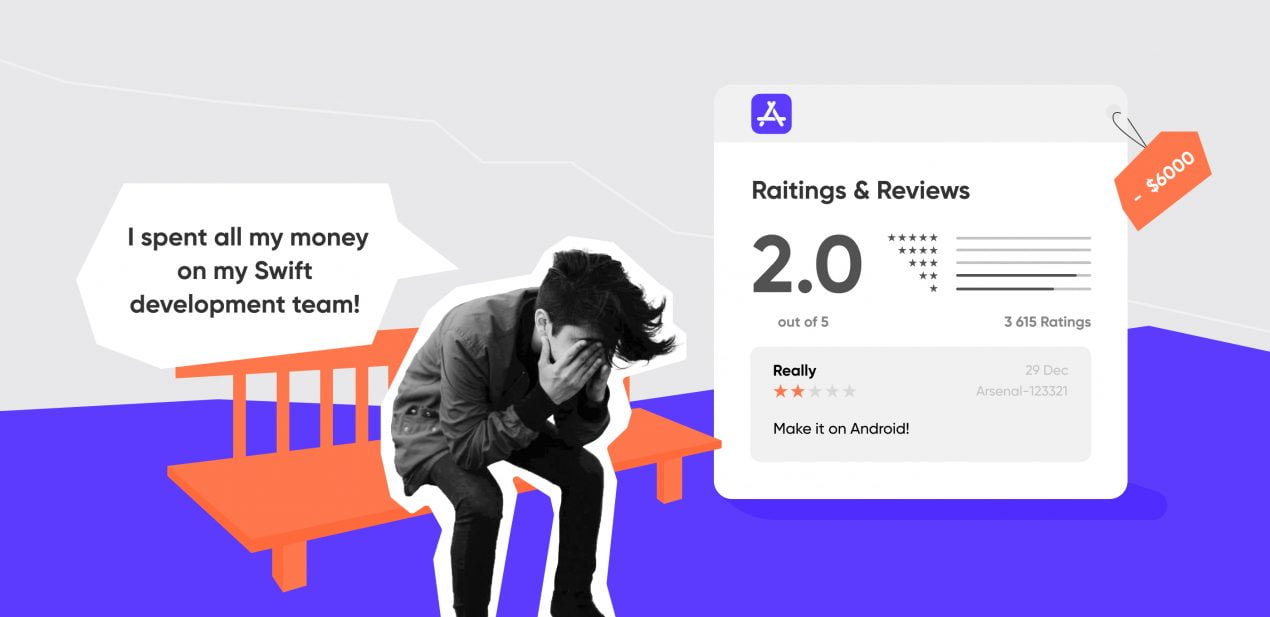3 hints to ease the search
Today we’d love to clear the fog around the term “tech stack” to help you narrow all options down to a manageable set of choices.
The three things for you to consider are:
1. Don’t be an early adopter (for techies)
Instead, choose what you know well. To ensure that it is a smart choice take a look at quite the opposite scenario.
Well, just like this one:
Say, you decide to start with unfamiliar trendy technology and build a pretty simple to-do list app. Soon you notice that lots of things, that you could have easily debugged and fixed with the tech stack you know, take too much time with the new stack. Simply due to the lack of experience. And then a pretty simple and straightforward task becomes a nightmare, you start hating that project, underestimate your skills and become frustrated in general.
Is it really worth it? Nah, man.
If you’re a PHP master, don’t start learning JavaScript just because it’s more popular. When the shit’s on fire (a usual thing for startups), you won’t know how to deal with it
For MVPs, getting fast to market is the first priority. Rather than learning a new technology, choose what you feel most comfortable with. Old, boring — who, the heck, gives a damn? There’s no better choice than the stack you already worked with.
P.S. We don’t claim that you need to stop learning new languages or frameworks — broadening horizons is truly a good thing to do. At the same time, if you want to start with an MVP, choose a technology that you’ve practiced a lot.
2. Follow trends
Technology is similar to fashion in some way. Programming language trends change every 5-7 years while framework trends change every 2-3 years. So, simply pick up the hottest technology and simply go with it.
Based on data from Github, Javascript is the most popular language in 2018
Make sure that the chosen technology has stable dev community and plenty of information to use ( following Github trending tabs might be an option to check this out). The bottom line is to ensure you have more than a single person who can help out — whether you ask for help on a dev forum like Stackoverflow or contact developers directly on Facebook.
At the same time, don’t rely solely on hyperbolic articles that state certain technologies will become super-popular one day. You are going to build MVP here and now, so tech stack should be actual today not in the unforeseeable future:)
3. Rely on dev skills and opinions
Share MVP ideas with potential devs and ask them to advice the tech stack with all its pros and cons. Consulting techies will help you reduce the risk of making the switch-over in the nearest future.
Focus on what your devs are experienced in. Avoid the temptation to “try something new” if it prevents you from rapid code shipping and harms the quality. The stack that complements your team’s experience results in a smooth bug fixing process and fast feature releases.
Your techie friend is a React Native dev? Ask him to join you and build a React Native app
Got it. So which tech stack should I use?
First, deliver pretty good burgers. Perfect buns and patties happen sometime later
Just like with burgers, it makes sense to validate the idea first — to let people ‘taste’ a very basic version. Quickly and for the lowest possible cost. A programming language and (or) framework that help you build your thing fast will be the smartest choice for your MVP.












